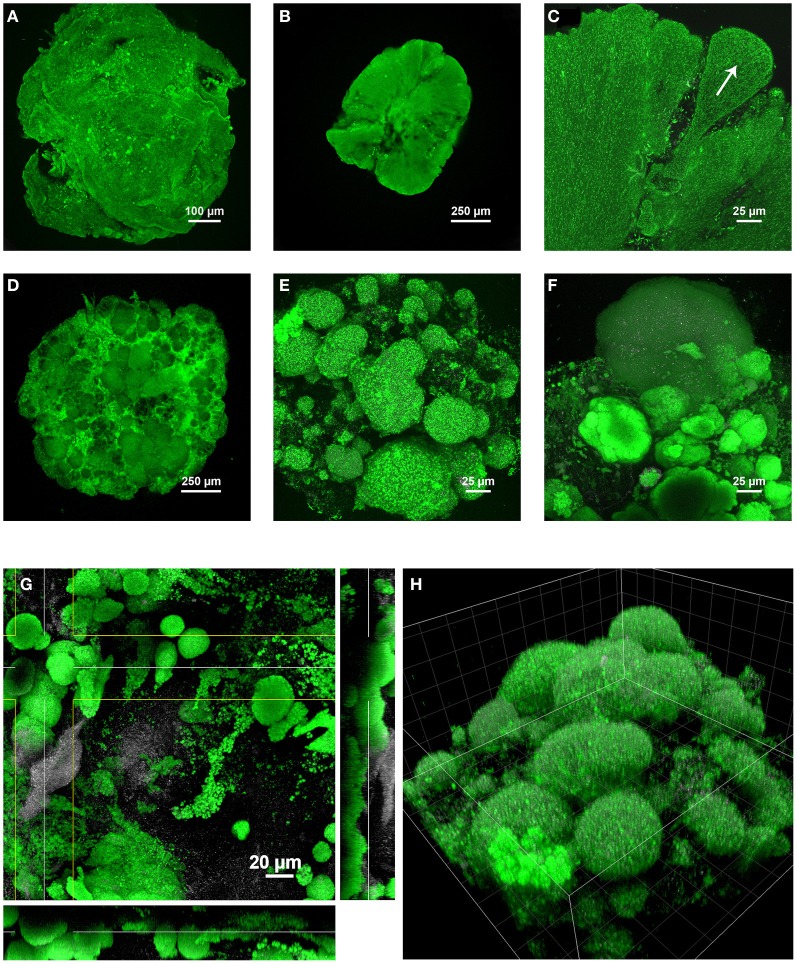Figure 7.
Main differences in the architectures of granules depending on the predominant bacterial populations involved, examined in two (A–F) and three dimensions (G,H). Under predominance of Zoogloea spp., smooth granular biofilm continua were obtained in early-stage granules collected after 20 days (A) and 60 days (B) in the BC-SBR. The formation and the outgrowth direction of biofilm petals can be observed in (C). The biofilm was composed of a homogeneous cell distribution in a gel matrix. Under conditions favoring PAO and GAO growth heterogeneous granular biofilm conglomerates were obtained as exemplified by day 503 (D) and day 484 (E) in the GAO-SBR, and by day 140 in the BC-SBR (F). During the transition on day 80 from early-stage to mature granules in the BC-SBR, the granular biofilm was composed of heterogeneous microbial clusters proliferating from the granule core outwards (G, XYZ projection). The cauliflower-like structure of heterogeneous granules present in the GAO-SBR is comparable to the mushroom-like structures of biofilm growth on a solid substratum under substrate-limiting conditions (H, 3-D volume projection, grid size of 20 μm). Color allocations: Rhodamine 6G (green), reflection signal (gray).

